
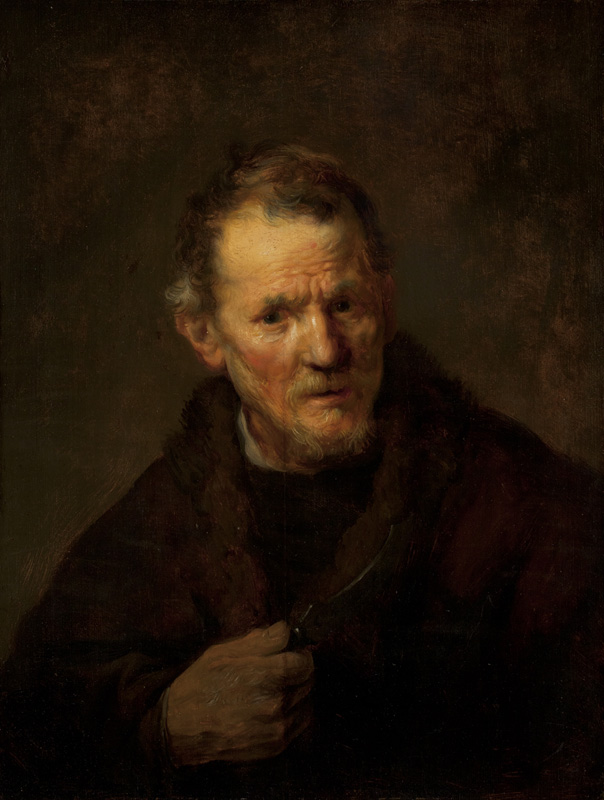
SAINT BARTHOLOMEW
about 1633
Rembrandt van Rijn
Dutch, 1606-1669
Oil on panel
Charlotte E. W. Buffington Fund, 1958.35
Alternative Labels

I first learned of the Worcester Rembrandt when I was in graduate school. It was 1972, the year the painting was stolen from the Museum. Happily, the work was recovered within weeks. Two years later I joined the staff of the Worcester Art Museum as assistant curator and over the past four decades had the pleasure of overseeing its collection of European art.
St. Bartholomew is a favorite among Museum visitors. The name Rembrandt naturally helps to single it out. But beyond the painting's attribution, most people are struck by the artist's ability to capture and focus our attention on the emotional expression of this early Christian saint. St. Bartholomew was one of the twelve apostles. According to ancient legend, he spread Christianity to Armenia, where his Christian faith resulted in his being flayed alive. The knife symbolizes his martyrdom.
Considered the greatest painter from Holland's Golden Age, Rembrandt distinguished himself with his handling of paint and light. Here, the bold brushwork captures and gives immediacy to the saint's facial features. The knitted brow, penetrating eyes, and slightly-opened mouth all suggest St. Bartholomew's anxiety as he faces torture and martyrdom. This intense expression is accentuated by the dramatic lighting, which seems to emanate from the face of the saint. By contrast, the hand with the knife is placed in shadow, suggesting the impending danger connected with St. Bartholomew's missionary role.
The painting, which is signed on the knife, appears to date from the early 1630s when Rembrandt, still in his twenties, attracted numerous students who were eager to adopt his style. Many of his pupils became accomplished artists in their own right, though their work has often been misattributed to the master.

Aside from the theft of three Rembrandt paintings from the Isabella Stewart Gardner Museum in 1990, the theft that first captivated my imagination and pushed me to study art crime more intensely was the 1972 theft of St. Bartholomew and three other works from the Worcester Art Museum. It was this crime that led me to meet with the mastermind of the theft. I wanted to speak to him to get inside his mind, to learn what motivated him, to ask why he chose the paintings he had stolen, and what he planned to do with them. Answers to these questions would be vital to my understanding of why people steal masterpieces, and key to my search for the stolen Gardner art.
I received answers to all of these questions, along with other valuable insights, and I dutifully took notes. But the question that really burned inside of me was, “What is it like to hold a Rembrandt in your hands, alone, believing it was all yours?” This usually verbose criminal found it hard to express the feeling, but I could tell that his amazement is where he and I found common ground—a shared appreciation for just how seminal Rembrandt really is.
I also recall studying the painting with then-director Jim Welu, as he pointed out to me that the light in the painting seemed to actually emanate from the subject, rather than shine upon him. This was an essential part of Rembrandt’s genius. And Jim himself glowed, too, as he looked at the painting.
I worry about the painting St. Bartholomew. I worry about the original frame that the aforementioned thief carelessly threw into the Blackstone River because he felt it was weighing him down. And I worry that this painting, like too many Rembrandts, will forever be remembered more for the fact that it was once stolen than for the fact that it stands as an example of the beauty and the greatness one man created with oil paints and a brush. It’s that greatness that reminds me of the importance of bringing stolen artwork back to the community from which it was taken. The care with which we treat cultural treasures such as St. Bartholomew says as much about us as a society as it does about Rembrandt as an artist.

At first glance, you might not find this particular painting to be anything or anyone significant. Yet upon closer inspection you will be able to see a deeply emotional rendition of the Apostle St. Bartholomew, who was skinned alive in Armenia after Christ's crucifixion, with the face of the young artist Rembrandt van Rijn. There is, however, some speculation over whether this actually is the face of his father, since it is this the face of an old man. Though Rembrandt had yet to reach his full potential at the time this work was created, he nevertheless portrays the Saint in an intense personal moment of fear and inner turmoil. It will not be the last time the artist models for his own paintings. It is something he did quite often, in fact, as if he connected so profoundly with his subjects and painting was his way of relaying that bond. In the case of St. Bartholomew, I feel as if he wanted to share the pain and terror felt by the old man, and therefore, literally became the face of the saint in the painting. In the Bartholomew's right hand, he holds to his chest the knife that symbolizes his martyrdom and this is where the artist chose to sign his name. This is very significant to me, as if Rembrandt not only wanted his own face to represent the Saint, but also deliberately placed his name on the very tool that is about to cause Bartholomew's intense suffering and traumatic death.
But it is the eyes of this man that pull me in so deeply and make this painting so incredibly emotional. It is St Bartholomew's crossroad: on the one hand he faces the brutal death of being flayed alive, but on the other hand, this very death shall deliver him from his pain and into the arms of the Lord in Heaven. Sometimes when I look into his eyes, I feel like he is begging me for mercy or help, but quickly I realize that what he wants us to know is that there are no boundaries to what he would suffer for his faith. That even though he is alone and frightened, he is brave enough to stand up for what he believed to be right. St Bartholomew is in a dark place, both literally and figuratively and yet he finds strength and courage through his faith.
So many emotions rendered in pigment and brushstrokes in a way that only Rembrandt was capable of—over 500 paintings, almost 300 etchings and about 1,400 sketches known to be done by him—it is no wonder that he is known to be one of the greatest masters, not only among his Dutch contemporaries, but also in the entire history of the art world.
Perhaps it is time to go look at this painting again... now what do you see?
American Hustle
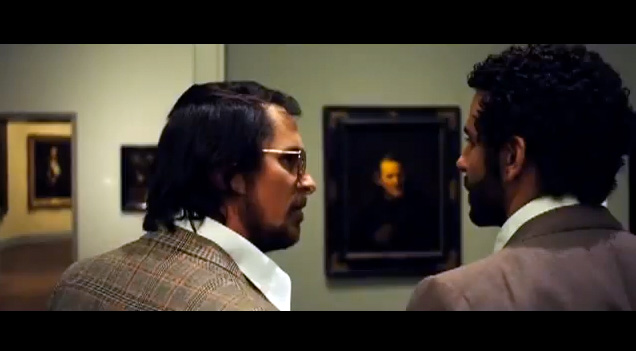
The David O. Russell film American Hustle (starring Christian Bale, Amy Adams, Bradley Cooper, Jennifer Lawrence, and Jeremy Renner) was filmed in part at the Worcester Art Museum in April of 2013. The film’s story incorporates WAM’s Saint Bartholomew by Rembrandt van Rijn. In the film still above, Christian Bale and Bradley Cooper's characters discuss Saint Bartholomew in WAM’s now reinstalled [remastered] galleries.
Learn more about American Hustle at americanhustle-movie.com
Learn more about the Worcester Art Museum and the city of Worcester’s role in American Hustle at masslive.com
The style and technique of the execution serve to date this painting at about 1633. At that time Rembrandt was employing the warm color harmonies and rich textural variations seen here. The agitated expression of the saint is also characteristic of this period when Rembrandt was particularly interested in capturing intense emotions in his subjects.
Saint Bartholomew is shown holding the instrument of his martyrdom, a knife, and looking forward to his grisly fate with a troubled, fearful expression. In two later representations of the same saint, painted by Rembrandt in 1657 and 1661, these violent emotions have disappeared, and Bartholomew is shown calmer, more secure in his faith, and with the profound psychological penetration which is characteristic of Rembrandt's later works.
Rembrandt was born at Leiden but lived and worked in Amsterdam after 1631 or 1632. Unlike most of his Dutch contemporaries, he was not a specialist but worked in virtually every category of painting and in the etching medium as well. In each of these fields he created works which rank with the most impressive in Western art.
Take a look in the Worcester Art Museum archives and learn more about your favorite pieces.
Files are in .pdf format. Please allow a few moments to load.
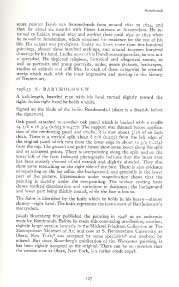
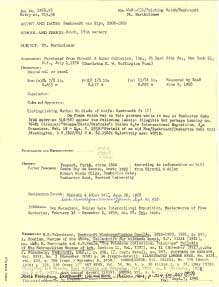
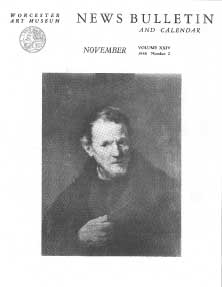
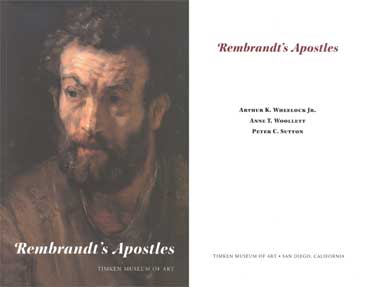
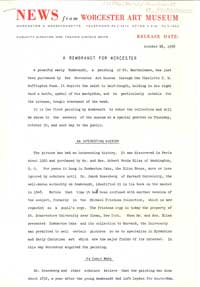

 Sign up for WAM eNews
Sign up for WAM eNews